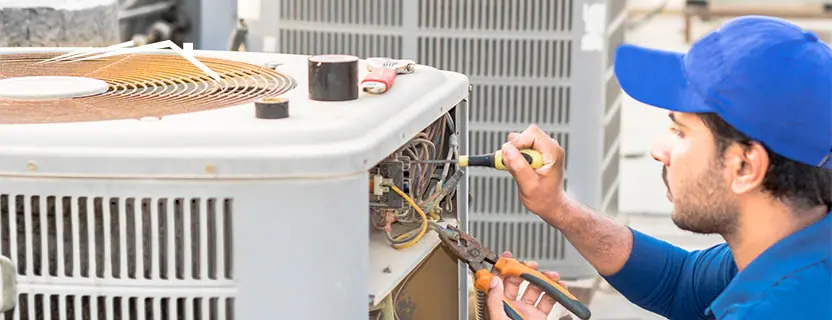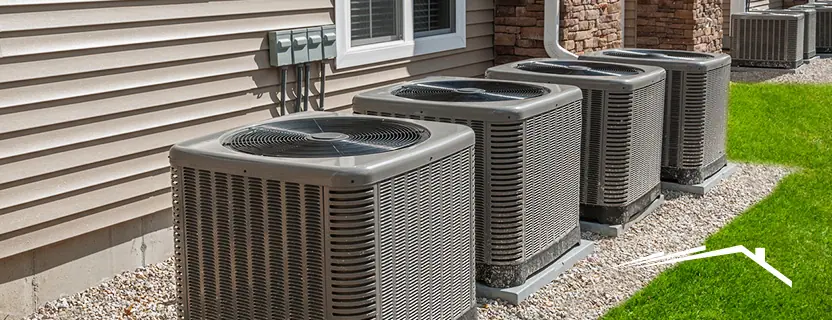A Homeowner’s Guide to Planning a furnace replacement
A Homeowner’s Guide to Planning a furnace replacement
Blog Article
Just How a Warmth Pump and Heater Collaborate to Enhance Your Home's Home heating Effectiveness
Comprehending just how a heat pump and heating system collaborate is necessary for homeowners looking for efficient heating solutions. Each system has its strengths, providing a well balanced strategy to home convenience. The warm pump excels in modest temperatures, while the furnace delivers rapid warmth during severe cold. This synergy not just reduces power prices however also improves the lifespan of both devices. What elements affect this partnership, and just how can home owners optimize their benefits?
Recognizing Heat Pumps: How They Function
Numerous individuals might be strange with their internal functions, warm pumps play an essential function in contemporary home heating systems. These tools run by moving heat from one area to another, making use of the principles of thermodynamics. In chillier months, a heat pump extracts heat from the outdoors air, ground, or water, and transfers it indoors to warm the living room. Alternatively, throughout warmer months, it can turn around the procedure, serving as an ac unit by removing warm from inside to the outside.Heat pumps contain an evaporator, compressor, expansion, and condenser valve. The cooling agent within the system soaks up heat as it evaporates at low temperature levels and pressures. The compressor after that raises the pressure and temperature level of the refrigerant, enabling it to launch warmth as it condenses. This reliable process can considerably reduce energy consumption contrasted to traditional heating methods, making warmth pumps a sustainable option for climate control in homes.
The Role of Furnaces in Home Heating
Heating systems play a crucial function in home heating by supplying a trusted resource of heat throughout the chillier months. They run by creating heat through burning or electric resistance, distributing it throughout the home by means of ducts or glowing systems. The efficiency of a heater is frequently measured by its Yearly Gas Use Effectiveness (AFUE) ranking, which indicates how successfully the system converts fuel right into heat.Furnaces can utilize various power resources, including gas, gas, power, or oil, enabling house owners to select the most appropriate alternative for their demands. Unlike heatpump, which may battle in extreme cold, heating systems keep consistent efficiency, guaranteeing that interior temperatures continue to be comfortable no matter exterior problems. In addition, modern-day furnaces usually come geared up with innovative innovation, such as smart thermostats and variable-speed blowers, enhancing their efficiency and responsiveness. This convenience makes furnaces a crucial component in all-inclusive home heating approaches.

Advantages of Utilizing Both Solutions With Each Other
Combining the strengths of both heating systems and heat pumps can result in a more reliable and effective home heating option. Making use of both systems permits home owners to capitalize on the heatpump's energy performance during milder temperatures while relying on the heater for even more severe cold conditions. This double strategy can significantly reduce power costs, as heatpump consume much less electrical power than traditional home heating techniques when temperatures are moderate.Additionally, using both systems together can improve convenience levels in the home. Heat pumps can offer consistent, even heating, while heaters can quickly elevate ambient temperatures when required. In addition, the combination of both systems can expand the life-span of devices by minimizing wear and tear on each unit, as they share the workload. Inevitably, home owners can delight in a well balanced, affordable heating option that adjusts seamlessly to varying climate condition, ensuring a warm and welcoming home throughout the winter season months.
How Warmth Pumps and Furnaces Complement Each Other
When home owners integrate heat pumps and heating systems, they produce a complementary heater that optimizes effectiveness and comfort. Heatpump operate by moving warm from the outdoors air or ground, making them extremely effective in moderate climates. They excel during milder temperature levels, giving cost-effective heating. On the other hand, heating systems produce heat through combustion or electrical resistance, delivering strong, prompt heat throughout extreme chilly conditions.The combination of these two systems enables dynamic changes based upon temperature level changes. Throughout warmer months or milder winter months days, the heatpump can take the lead, saving energy and reducing costs. As temperatures drop, the heating system can perfectly involve, ensuring regular warmth throughout the home. This synergy not just optimizes power usage however additionally improves the life expectancy of both systems, as each system runs within its suitable performance range. Together, they create a balanced setting that adjusts to varying environment demands.
Maximizing Effectiveness: Tips for Homeowners
Homeowners can improve their heating effectiveness with numerous functional strategies. Developing a normal upkeep timetable, incorporating clever thermostat innovation, and carrying out reliable insulation and sealing services are essential actions. These steps not only boost convenience yet likewise minimize energy costs.
Normal Maintenance Arrange
To ensure optimal heating performance, establishing a regular maintenance routine is important for any kind of home. House owners need to focus on routine examinations of both warm pumps and furnaces to establish peak efficiency. This includes changing air filters every one to 3 months, as stopped up filters can considerably minimize efficiency. Furthermore, scheduling expert maintenance a minimum of annually permits professionals to recognize and address possible problems before they rise. Property owners should additionally clean up the warmth pump's outside device to avoid debris accumulation that can hinder airflow. By adhering to a normal upkeep schedule, home owners not just improve their furnace' performance yet additionally extend their lifespan, resulting in greater comfort and decreased power prices throughout the colder months.
Smart Thermostat Integration
Incorporating a smart thermostat right into a home heater can considerably improve power effectiveness, especially as it enables for specific control over temperature level setups. These gadgets can find out the homeowner's routine and preferences, immediately adjusting the temperature level to enhance convenience while minimizing energy usage. They can lower heating throughout times when the home is empty, lowering unneeded usage. Numerous wise thermostats also supply real-time energy use data, enabling house owners to make informed choices about their home heating practices. Additionally, remote access through mobile phone apps permits customers to readjust settings from anywhere, guaranteeing the home is cozy upon return. In general, clever thermostat combination not just improves convenience but substantially adds to energy cost savings and effectiveness.
Insulation and Securing Solutions
Smart thermostats play a look at this now crucial duty in power effectiveness, however their performance can be greatly improved by appropriate insulation and sealing options. Homeowners must focus on protecting attic rooms, walls, and floors to decrease warmth loss. Top quality insulation materials, such as spray foam or fiberglass, can substantially improve thermal resistance. In addition, sealing voids around home windows, doors, check my reference and ducts protects against cool air infiltration and warmth escape. Weatherstripping and caulking are reliable approaches for dealing with these leakages - heat pump installation ooltewah tn. Routine examinations for air leakages, together with the usage of blower door examinations, can aid identify issue locations. By investing in insulation and sealing, property owners can optimize the performance of their heating unit, eventually resulting in minimized power consumption and reduced utility costs
Common Misconceptions Concerning Warmth Pumps and Furnaces
What misunderstandings border warm pumps and heating systems? Many people incorrectly think that warmth pumps are inefficient in cooler environments. In fact, modern-day heat pumps are created to operate effectively also in low temperatures, offering reliable heating throughout wintertime. Another common misconception is that furnaces are constantly extra reliable than warmth pumps. However, this depends on the details power resources and effectiveness ratings of the systems in question. Some may likewise think that utilizing both systems all at once is unnecessary, however as a matter of fact, this combination can maximize home heating effectiveness, particularly during severe weather. Furthermore, individuals frequently presume that heat pumps need constant maintenance, when in reality, they have similar upkeep requires to standard heating unit. By unmasking these misconceptions, homeowners can make more enlightened decisions concerning their heating alternatives, eventually causing boosted convenience and power efficiency in their homes.
Upkeep Considerations for Combined Equipments

Frequently Asked Concerns
Can Warmth Pumps Job Properly in Exceptionally Cold Climates?
Heatpump can battle in incredibly cold climates due to decreased efficiency and heat extraction restrictions. Nevertheless, improvements in technology have actually caused versions developed for far better performance in such conditions, boosting their feasibility in extreme settings.
How Long Do Heat Pumps and Furnaces Usually Last?
Heatpump typically last 15 to twenty years, while heating systems have a lifespan of 15 to three decades. Regular maintenance can prolong their longevity, making sure effective operation and decreasing the demand for early substitutes.

What Is the Average Expense of Putting Up Both Systems?
The average expense of mounting both a warmth pump and a heater commonly varies between $5,000 to $10,000 - heat pump service. Aspects influencing this expense include system dimension, installment intricacy, and local labor rates
Are There Tax Obligation Motivations for Utilizing Energy-Efficient Heating Solutions?
Many property owners ask about tax incentives for energy-efficient heater. Numerous federal and state programs commonly supply credits or refunds, motivating the adoption of lasting modern technologies to lower energy consumption and promote environmental responsibility.
Exactly how Do I Choose the Right Dimension Heatpump and Heating System?
Picking the appropriate size warm pump and furnace involves calculating the home's square video, taking into consideration insulation quality, and reviewing local climate. Consulting a specialist can assure ideal system efficiency and power performance based on details needs. furnace replacement. Understanding just how a heat pump and furnace job together is important for property owners seeking effective heating remedies. In chillier months, a warm pump essences warmth from the outdoors air, ground, or water, and transfers it inside your home to warm the living space. When homeowners incorporate warmth pumps and heating systems, they create a complementary home heating system that makes best use of effectiveness and comfort. Heat pumps operate by transferring heat from the outdoors air or ground, making them extremely effective in moderate environments. Warmth pumps can struggle in exceptionally cold environments due to lowered efficiency and warm removal restrictions
Report this page